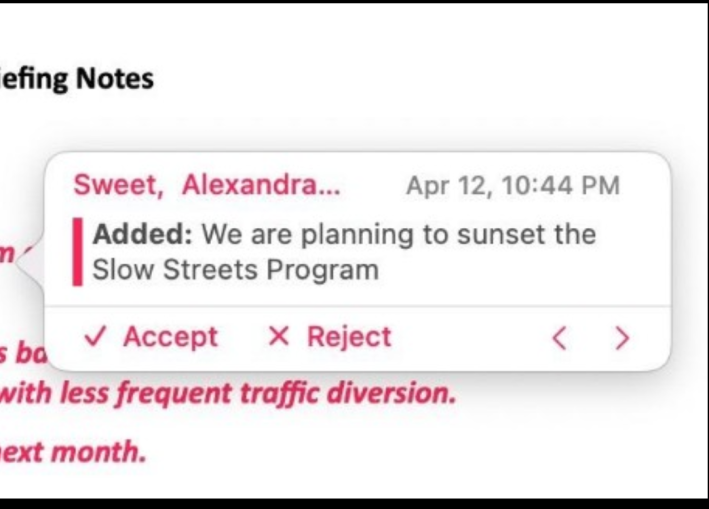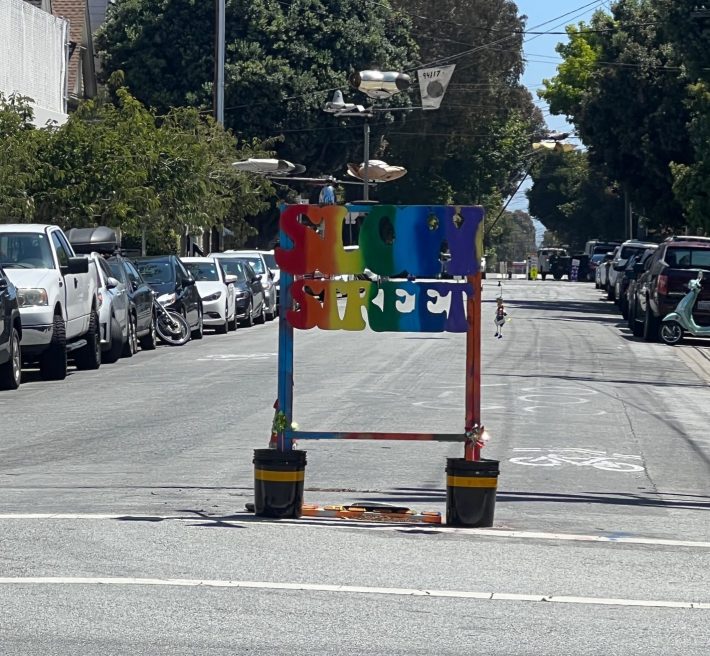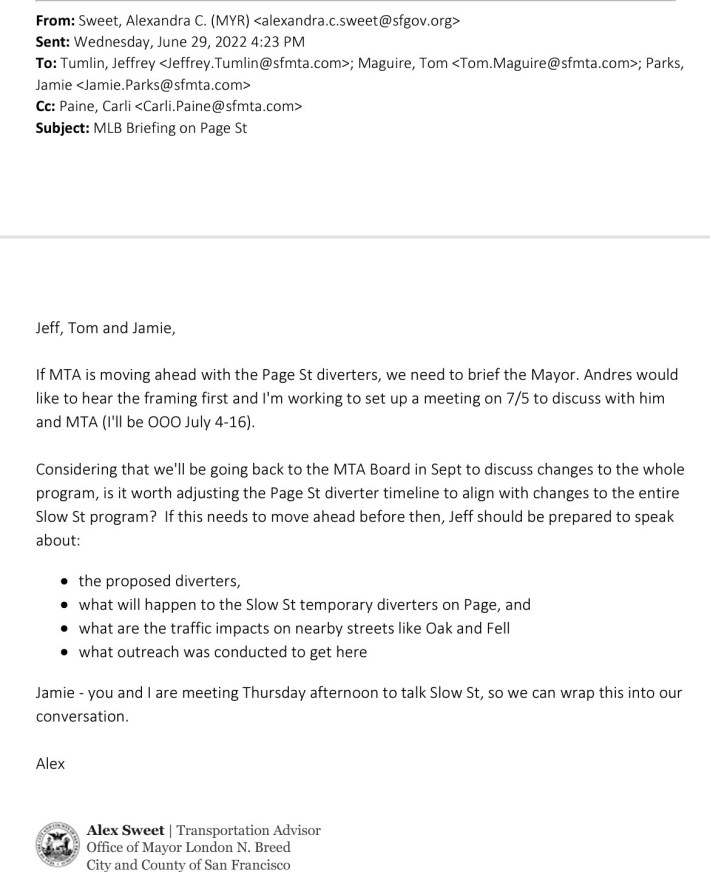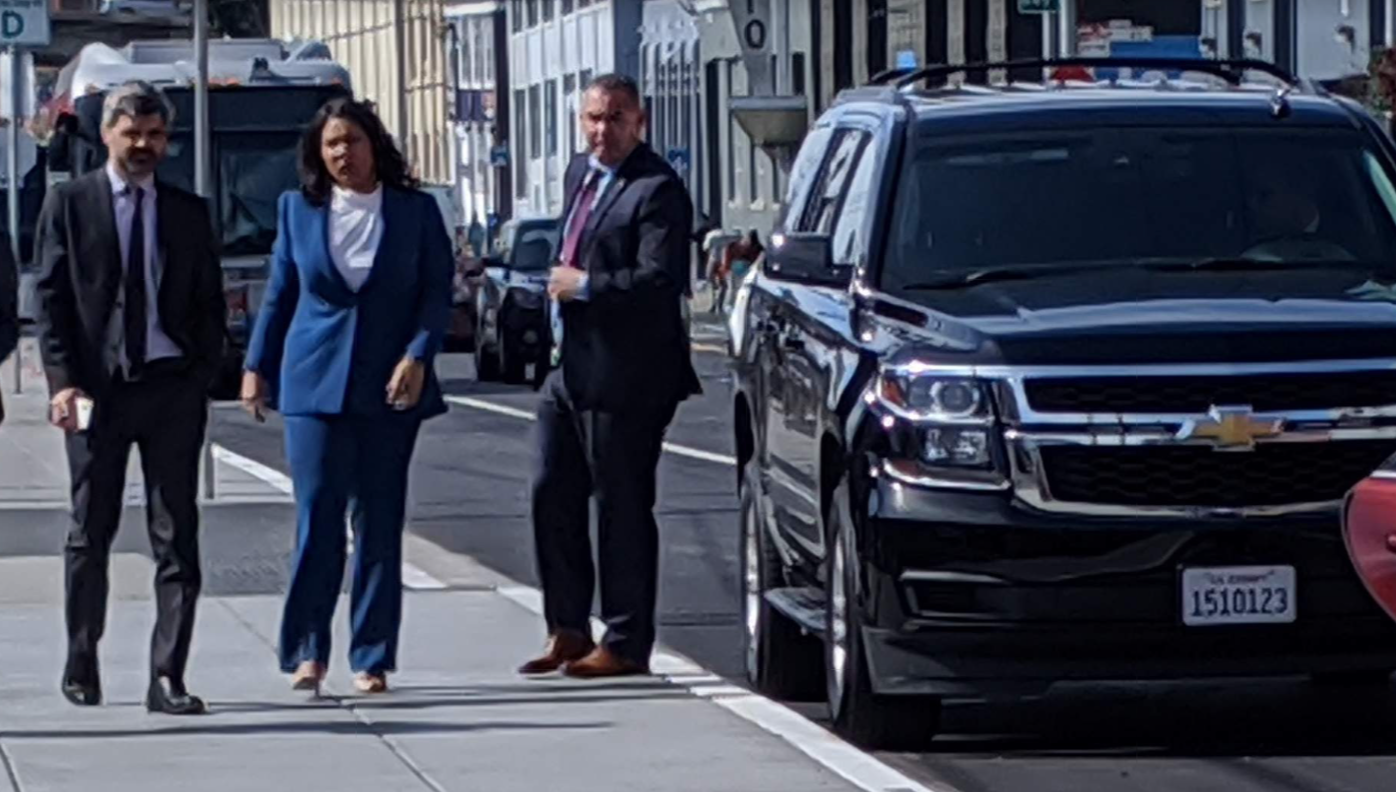Note: GJEL Accident Attorneys regularly sponsors coverage on Streetsblog San Francisco and Streetsblog California. Unless noted in the story, GJEL Accident Attorneys is not consulted for the content or editorial direction of the sponsored content.
A city hall insider has sent Streetsblog internal communications that confirm reports that Mayor London Breed was behind delays to the installation of long-approved traffic diverters on Page Street. These same leaks prove what some in the advocacy community already concluded: the mayor intends to obliterate the remains of San Francisco's slow streets program.

The above screen shot shows notes from Alexandra Sweet, the mayor's transportation deputy, on talking points shared with city staff instructing them that they will "sunset" the entire slow streets program.

As previously reported, the Page Street slow street project--which was actually part of a plan to calm the street that predates the COVID pandemic--mysteriously had approved traffic diverters put on hold. These diverters were supposed to be installed in the spring on Stanyan, Divisadero, and Masonic. At the time, the San Francisco Fire Department was suspected of requesting the delay. "We have no holds on the proposed diverters," wrote the San Francisco Fire Department's Lt. Jonathan Baxter, in an email to Streetsblog.
Another leaked document backs up that it was the mayor's office that was responsible for the delay.

Of course, most questions asked in the above letter were answered in December during SFMTA hearings. After pressure from advocates and Supervisor Dean Preston, SFMTA spokesperson Erica Kato confirmed on July 19 that on Page "the two diverters at Stanyan and Masonic that went to public hearing on 7/8 have been approved today by the city’s Traffic Engineer. This is just two days after all the other items were approved on Friday."
That is, if Mayor Breed doesn't jam them up again. Divisadero's diverter is still in flux.
The mayor, who lives on Page and gets around in a city-provided, chauffeured SUV, had this to say over the weekend about the future of the slow streets program:
There is no one-size-fit-all approach, and we need to make our decisions for what makes sense based on transportation access, safety improvements, maximizing mobility for all users, and advancing our goals to reduce our greenhouse gas emissions. The purpose of the network will be to provide safe routes for everyone in the city to get around, and not solely to provide exclusive routes or turning public streets into private streets for local residents.
Of course, this is a straw-man; nobody wants to "provide exclusive routes or turn public streets into private streets." Slow Streets still permit delivery trucks, emergency vehicles, and any other motorist who needs to access the street to do so. Cyclists are also permitted to ride straight through. The plan simply stops motorists from using small, neighborhood streets as cut-through alternatives to arterials.
I fully support Slow Streets. It’s frustrating to see the Administration trying to reverse the progress our city has made on this during the pandemic. I will continue to advocate for preserving, improving, and expanding Slow Streets. It’s the least we can do.
— Dean Preston (@DeanPreston) August 2, 2022
The mayor is also arguing from the deceitful "compromise" position that starts by saying every transportation mode is valid and there should be balance. Of course that's true, but the status quo is phenomenally out of balance: nearly every inch of asphalt and concrete in San Francisco is currently used for car storage and car movements. Even bike lanes are continually used by motorists for double parking. Yes, bicycles are "permitted," in theory, in most of that space too, but given the relative mass and power of an automobile, it doesn't work that way. It's also one of the central reasons why cyclists and pedestrians keep getting mashed just trying to get around San Francisco.
It might also be why the mayor herself cycles for photo ops, as seen below, but otherwise uses her SUV.






